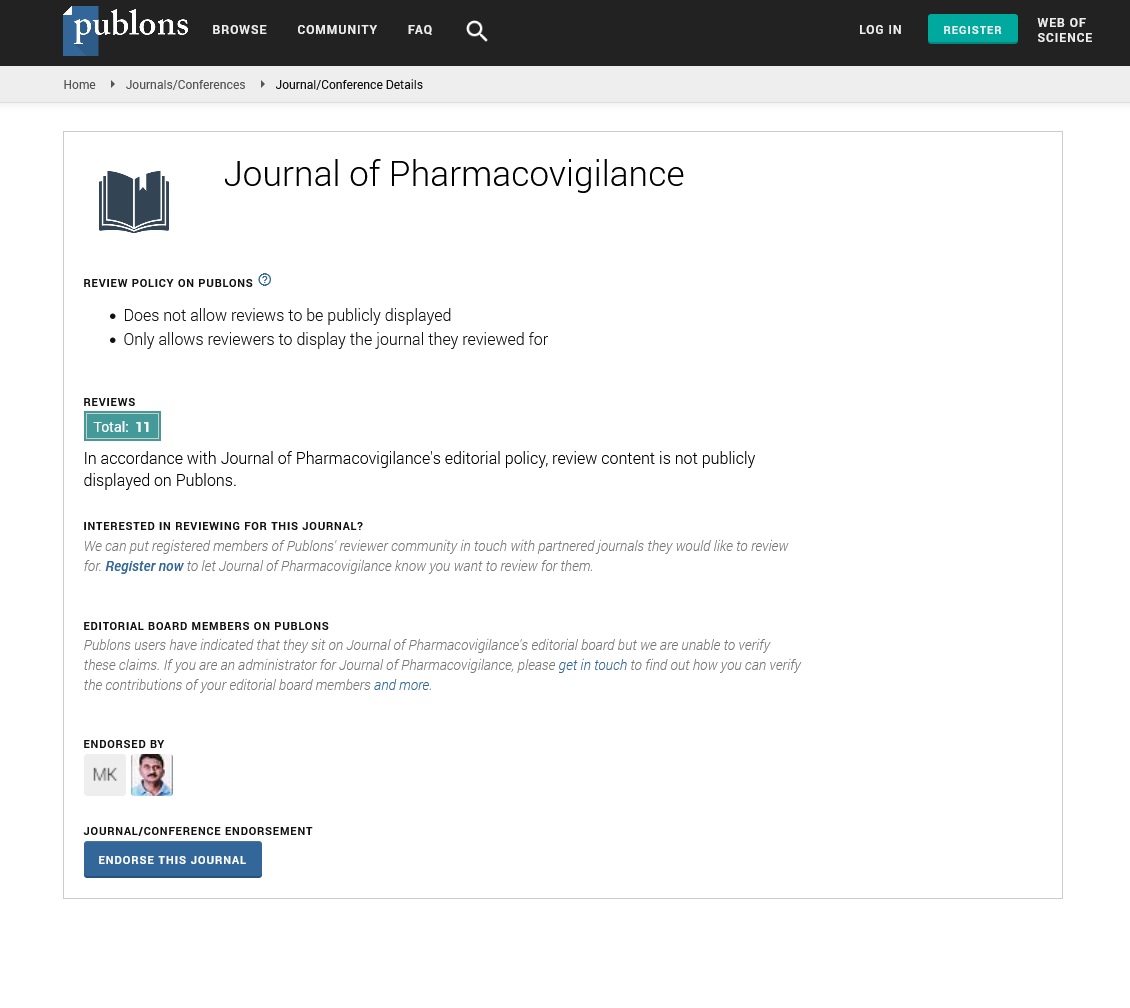Indexed In
- Open J Gate
- JournalTOCs
- The Global Impact Factor (GIF)
- RefSeek
- Hamdard University
- EBSCO A-Z
- OCLC- WorldCat
- Publons
- Euro Pub
- Google Scholar
Useful Links
Share This Page
Journal Flyer

Open Access Journals
- Agri and Aquaculture
- Biochemistry
- Bioinformatics & Systems Biology
- Business & Management
- Chemistry
- Clinical Sciences
- Engineering
- Food & Nutrition
- General Science
- Genetics & Molecular Biology
- Immunology & Microbiology
- Medical Sciences
- Neuroscience & Psychology
- Nursing & Health Care
- Pharmaceutical Sciences
Mechanism of high MW complexes formation by Verteporfin which can impair the growth of cancer cells
Conference Series LLC Joint International Event on 7th Pharmacovigilance & Pharmaceutical Industry
August 22-24, 2016 Vienna, Austria
Eleni Konstantinou, Lucy H L Young and Demetrios G Vavvas
Harvard Medical School, USA
Scientific Tracks Abstracts: J Pharmacovigil
Abstract:
Verteporfin (VP) was first used in Photodynamic therapy (PDT), where a non-thermal 689 nm light activates VP in the presence of oxygen to produce highly reactive short-lived singlet oxygen and other reactive oxygen radicals, resulting in local damage. In addition, it has been shown that VP can interfere with the HIPPO pathway in the absence of light and inhibit the growth of hepatocellular carcinoma, retinoblastoma and uveal melanoma. More recently we observed that VP can lead to the formation of dimers and high molecular weight aggregates. In a series of experiments, uveal melanoma (MEL 270), human embryonic kidney (HEK) and breast cancer cells (MCF7) were treated with either low (1.25 ug/ml) or a high (7.5 ug/ml) dose of VP for 0, 6 and 24 hours. Dark and light conditions before and after lysis of the cells were examined in order to identify the exact cell cycle phase that the high molecular weight complexes occurred. We have demonstrated that VP aggregate formation requires light-activation and oxidization of VP. These high molecular weight complexes are toxic for the cells, leading to growth restriction and cell death. This work demonstrates yet another potential therapeutic mechanism of action of verteporfin.
Biography :
Eleni Konstantinou has completed her MD from Athens Medical School, National and Kapodistrian University of Athens and is pursuing her Post-doctoral studies in Harvard Medical School, Department of Ophthalmology, MEEI.

